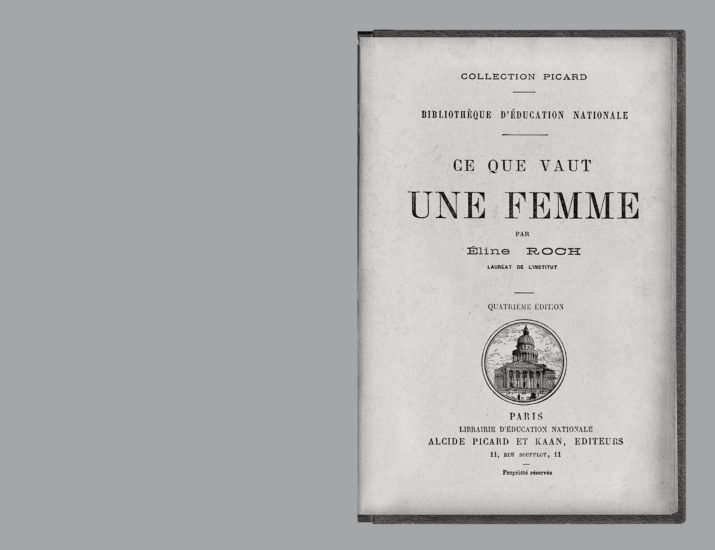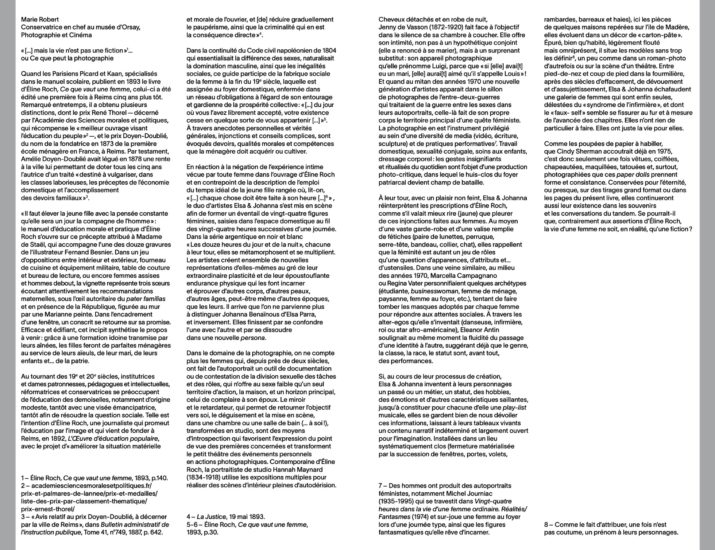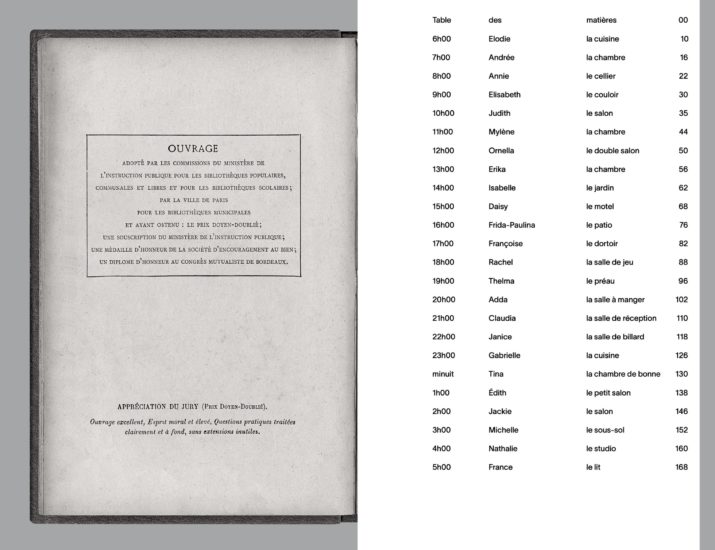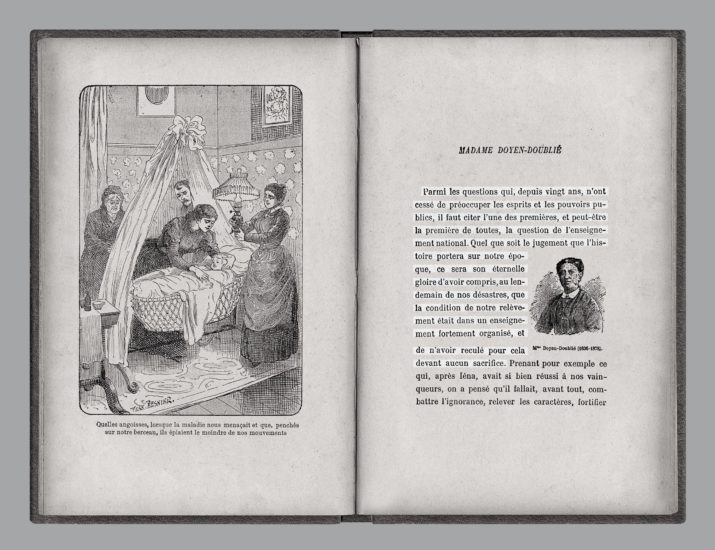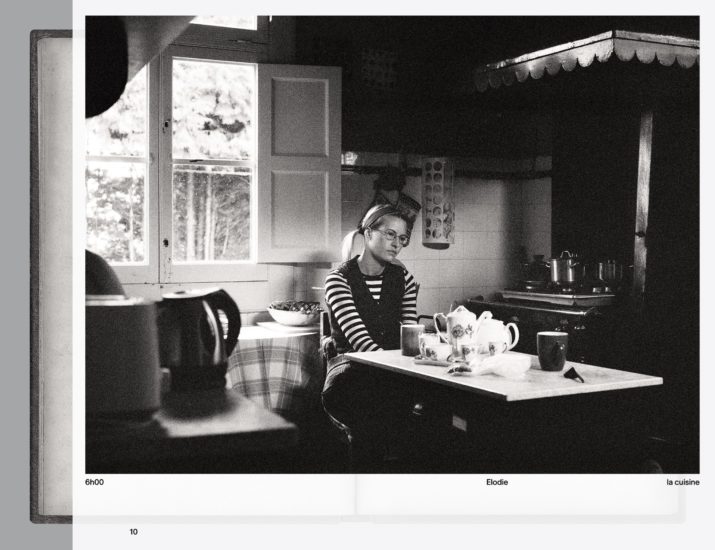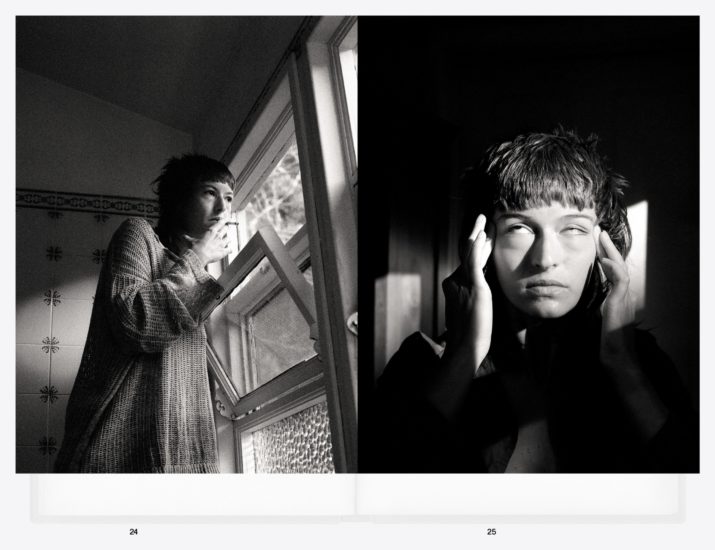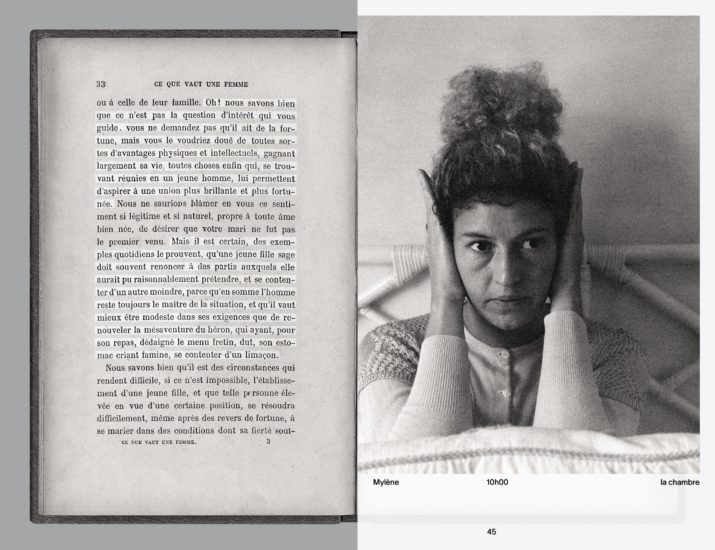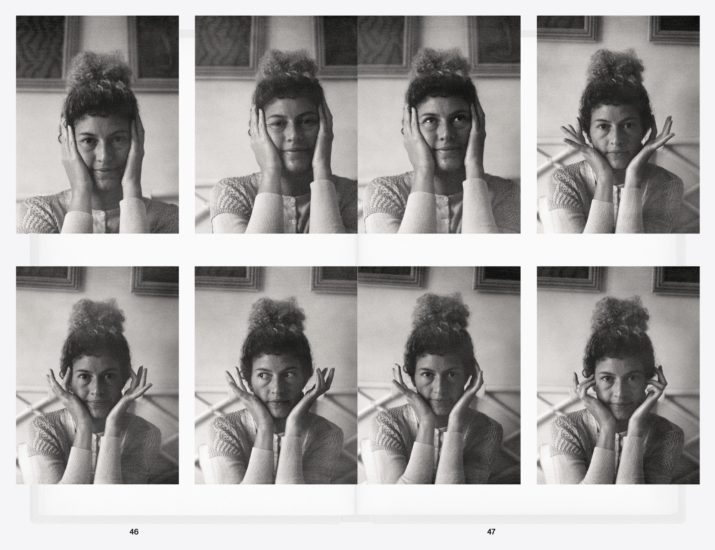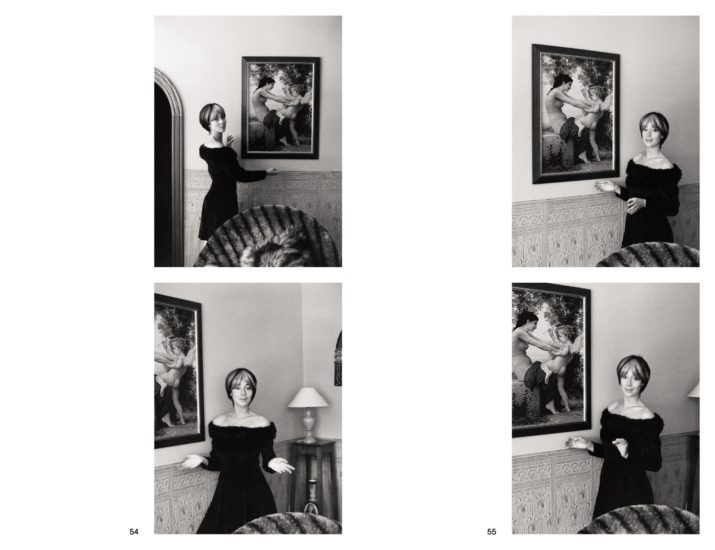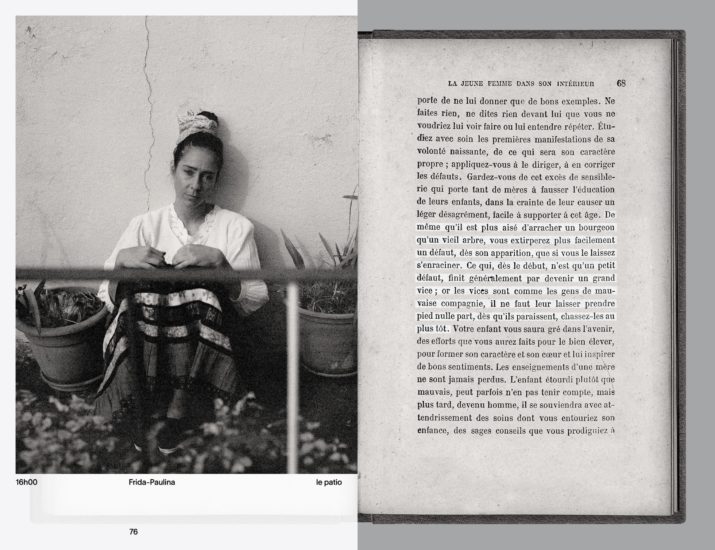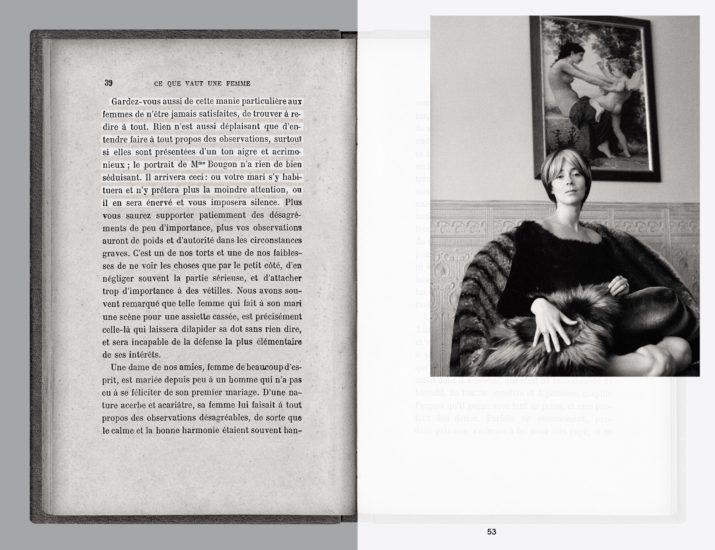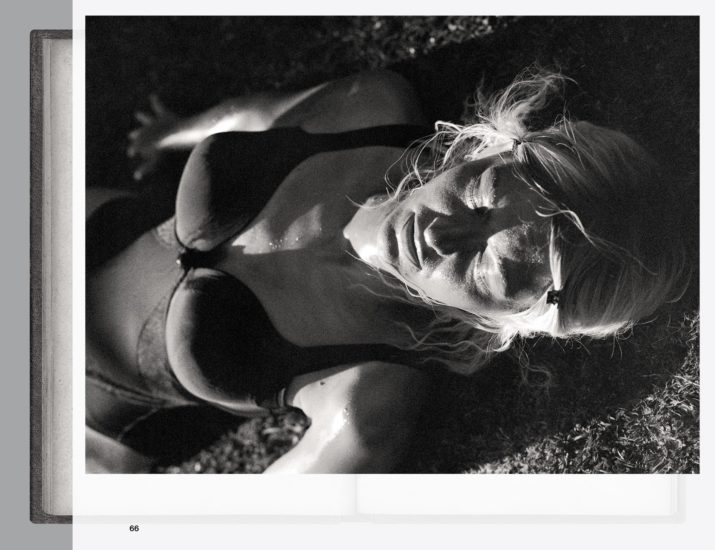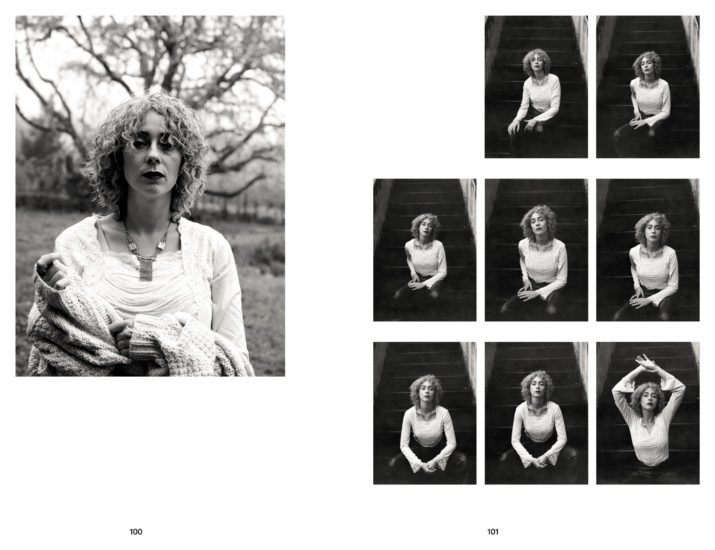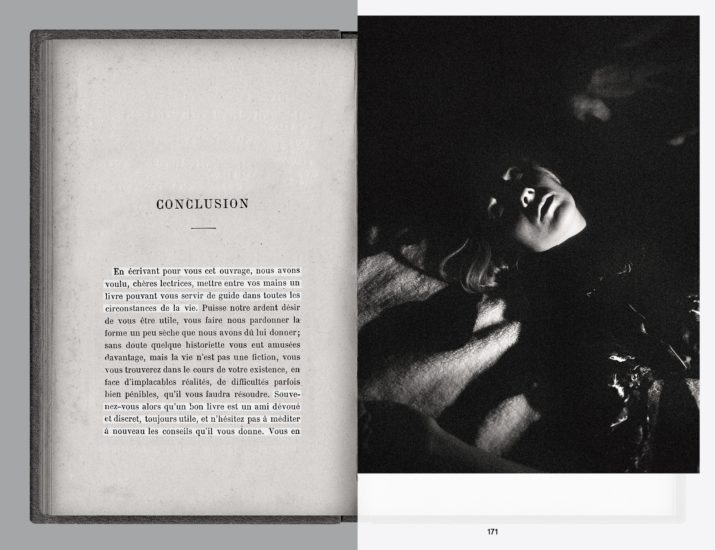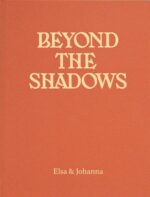Le ton est donné dès l’introduction sous la plume de son autrice Éline Roch, lauréate du Prix Doyen-Doublié (en 1893) : « Qu’adviendrait-il de notre pays le jour où la femme se trouverait détournée de sa destination naturelle, où la jeune fille pourrait supposer qu’il existe autre chose pour elle que la mission noble et sainte d’être épouse, d’être mère ? « .
Pour rééditer ce « traité d’éducation morale », nous avons invité le duo d’artistes Elsa & Johanna à poser son regard contemporain sur ces injonctions d’un autre temps. Les vingt-quatre personnages féminins qu’elles incarnent dans Les douze heures du jour et de la nuit s’immiscent dans la chronologie du livre, avec ironie et malice ; préface de Marie Robert, conservatrice en chef au Musée d’Orsay, photos en n.b.
The origin of this project is the discovery of a book, in the attic of the family house, entitled “Ce que vaut une femme : traité d’éducation morale et pratique des jeunes filles” (What a woman is worth : a treatise on the moral and practical education of young girls), published in 1893 with the support of the Ministry of Public Education. Its content appeared to us both edifying and comic.
The tone is set in the introduction by its author, Éline Roch, winner of the Doyen-Doublié Prize (in 1893): “What would happen to our country the day when women were diverted from their natural destination, when young girls could assume that there was something else for them than the noble and holy mission of being wives and mothers? “.
To accompany the re-edition of the book, we wanted a woman’s perspective to bring her sensitivity and emotions to this work from another time. We have chosen to give carte blanche to the duo of female artists Elsa & Johanna who present an original series and a singular and offbeat response to the book.


